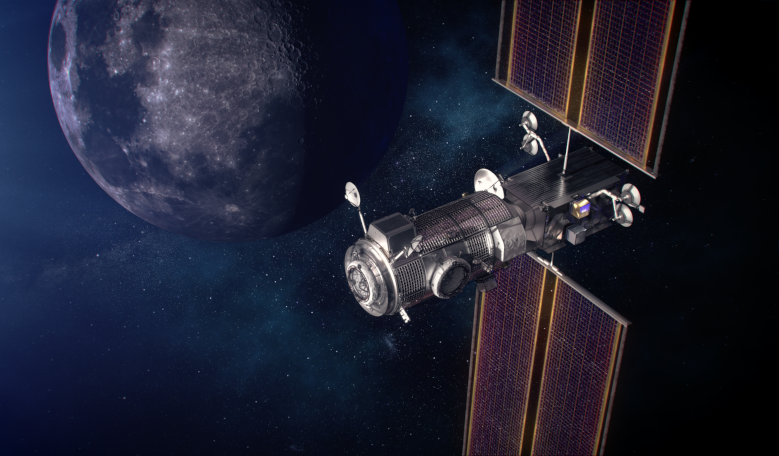The US Government Accountability Office (GAO) has published a report casting doubts on NASA’s plan to complete a moon landing in 2024 by suggesting that an ambitious timescale and technical risks are issues likely to push back the date of the Artemis III mission.
“NASA has made some progress. But a fast-tracked schedule to meet this ambitious date—along with some technical risks—mean that it's less likely a lunar landing will happen in 2024,” says the report published 26 May.
This is the second of two reports undertaken by the GAO in response to a provision stipulated by US Congress in a 2018 House appropriations bill; the first was issued in 2019.
Since then, the GAO has continued to assess the extent to which NASA has made progress on its lunar programmes and how the agency has addressed challenges related to its management of lunar programs by reviewing key documents and interviewing relevant agency officials.
The results of a 2020 NASA-sponsored study on lunar programme status were also assessed by the GAO.
According to this latest report, the GAO has found that NASA “has not fully addressed management challenges related to its lunar programmes” that were identified in the 2020 study.
Key programmatic and technical tools the agency planned to use to guide mission decision-making have not been clearly documented say the report, without which NASA “cannot ensure that it has the appropriate processes in place to track how the missions will achieve objectives and address risks at the mission level.”
Furthermore the space agency also faces technical risks say the accountability office.
High on the list of potential problematic developments was the Gateway – an outpost orbiting the Moon that will be used as a staging point for human and robotic exploration in deep space.
The Gateway will be a huge undertaking, and as such NASA has signed a memorandum of understanding with the European Space Agency, the Canadian Space Agency and with the government of Japan for contributions including an international habitat and refuelling capability, a external robotic system capability and for habitation and logistics resupply capabilities, respectively.
Russia could also contribute, however, as of February 2021, a decision regarding the nation’s contribution to the Gateway has not been made.
With or without Russia’s help, the Gateway will rely on power and propulsion technology that has never before been used, and already contractor efforts to develop the technology are behind schedule says the GAO report.
Delays or not, NASA has made no clear decision whether the Gateway will be used for the 2024 lunar landing or not.
NASA’s schedule to land the next man and first woman on the Moon was brought forward from its initial 2028 timeframe to 2024 at the request of the Trump administration in 2019; a goal that was described as ambitious by Senior NASA officials at the time.
In comparison with other NASA projects, Artemis programmes have advanced at a faster pace, but even for those projects which are within schedule estimates, problems surrounding costs are overshadowing any progress made.
Recently, NASA’s contract for its Human Landing System (HLS) came under fire when it was revealed just one participant – SpaceX – had been selected due to insufficient funding from Congress and its SLS launch vehicle has been plagued with finance issues.
NASA also faces criticism in the GAO report for the way it conducts its acquisitions. Instead of identifying potential problems in a programmes design upfront so that they can be addressed at the time, the agency delays establishing requirements and relies on service-type contracts to fix any major problems. This comes with risks says the report and adds contract modifications which can be costly.
To overcome this and other issues outlined in the report, GAO is making four recommendations, including that NASA developes guidance to mitigate risks associated with delaying the establishment of high-level requirements early in the acquisition process and that the agency assess “off-ramps” for an immature Gateway technology.
“With just over 3 years remaining, NASA lacks insight into the cost and schedules of some of its largest lunar programs in part because some of its programs are in the early stage of development and therefore have not yet established cost and schedule estimates or baselines,” the GAO report states.
NASA has concurred with three of the recommendations, but did not concur with the fourth, which related to costs associated with the agency’s Volatiles Investigating Polar Exploration Rover (VIPER).
Formerly known as the Resource Prospector, the project was original estimated to cost around $90.6 million; a figure which did not include the cost to launch and land the rover.
NASA defended not including its original development costs in the approved cost baseline of $433.5 million for VIPER, even though they have leveraged development work under the prior project, because the project has significantly changed from what was planned for Resource Prospector.
GAO stands by its recommendation that NASA should include relevant development costs from the Resource Prospector project for the delivery of VIPER to the lunar surface into its cost baseline.
A copy of the full report can be viewed here: https://www.gao.gov/assets/gao-21-330.pdf











